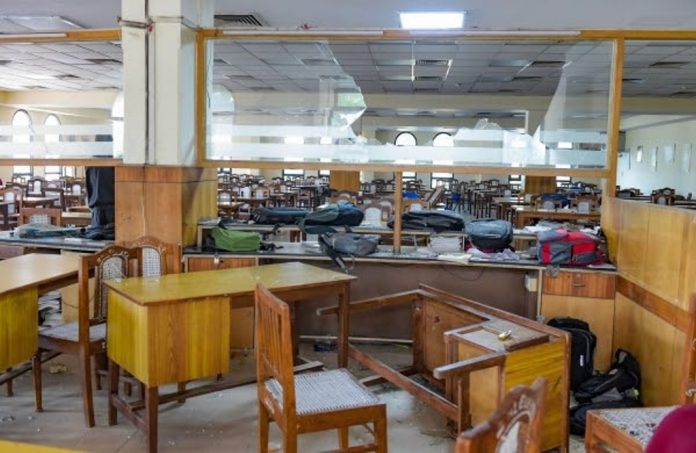Md Mustafa
If you have ever been in Jamia Millia Islamia (JMI) after December 15, you would notice the beautiful paintings and graffiti that have been curated by students and artists alike, on both sides of the road, walls and entrances of various departments to show resistance and solidarity with the students fraternity, who have been agitating against Citizenship Amendment Act, which is textually and contextually discriminatory and violates fundamental rights of equality and secularism. The graffiti, both inside and outside the university campus, arose as a symbol of resistance and revolution when on December 15, 2019, student protests had erupted in Jamia against CAA. Just a day later, on December 15, JMI had come under attack by the Delhi police who used exceptionally brutal force, not sparing even those who were studying in the central library of the campus.
On March 24, I received a call from one of my friends who informed me that all these paintings and graffiti which had been made by Jamia students as protest against police’s brutality upon Jamia students on December 15 were being whitewashed by the police. Why she called me is because I was the one, who had suffered fracture in both my hands on the evening of December 15 while I was sitting inside the library, preparing for my upcoming examinations along with Minhaj, who lost vision on his one eye.
Both Minhaj and I have been featured on the graffiti at the gate of Nawab Pataudi Sports Complex along with several other paintings by Fine Arts student to express resistance against the police crackdown inside JMI campus, in addition with CAA and NRC. These paintings have always been about more than just colors. They were messages conveyed to our fellow Indian citizens that police reforms are the need of the hour – as also suggested by various committees like Gore Committee, Ribeiro Committee among others, otherwise police continues becoming less professional, more political, until they start acting like party workers, which is quite evident by the recent violence in JMI, JNU and others.
In JMI, police had entered with tear gas and shells boldly, even without necessary entry permission from university authorities, which is a complete breach of university security. Similar incidents have taken place in colleges and universities across India during the anti-CAA and anti-NRC protests. It was the same police who paid no heed to distress calls from students before they were attacked by RSS goons inside the campus at JNU. The graffiti speaks against this violation of laws by the lawkeepers themselves, strongly believing that such brutal policing would not be healthy sign for any democratic set-up and if the trend continues, it may further erode police-public trust. Action against this police brutality must be taken otherwise we would be soon witnessing instances reminiscent of the British regime.
In the wake of Corona pandemic, on March 23, Jamia Coordination Committee was quick to call off the Jamia protest after sustaining more than 100 days only in its attempt to cooperate with Government in the larger interest of our country and citizens. And despite all our active cooperation what did we get in return are defaced and destroyed graffitis that represented resistance and revolution to uproot state sponsored tyranny and make India a secular and inclusive democracy, as the makers of our Constitution had envisioned.
I wonder how defacing of graffitis by would help contain the coronavirus pandemic. It seemed to make no sense to me that police would go about whitewashing or defacing graffitis when India is facing one of the biggest epidemics in the world, given that ours is a fragile health infrastructure with availability of only a bed-population ratio of 1:1000.
As a well informed and responsible citizen of this country, we are with the Government to fight Corona together but as a part of the student community, what pained me the most is the attack on our freedom of expression that those paintings stood for, by those on whom we posed trust.
We will make graffitis once university opens and will continue to fight against injustice so that we will able to preserve our social fabric and strive towards an inclusive society. But I can only hope Delhi police will behave in a more professional way and will carry the legacy of its distinguished officers like Kiran Bedi and Niraj Kumar, functioning in spirit of its motto ‘Shanti, Sewa, Nyaya.’
Md Mustafa is currently a student of Masters in Social Exclusion and Inclusive Policy at Jamia Millia Islamia, New Delhi


